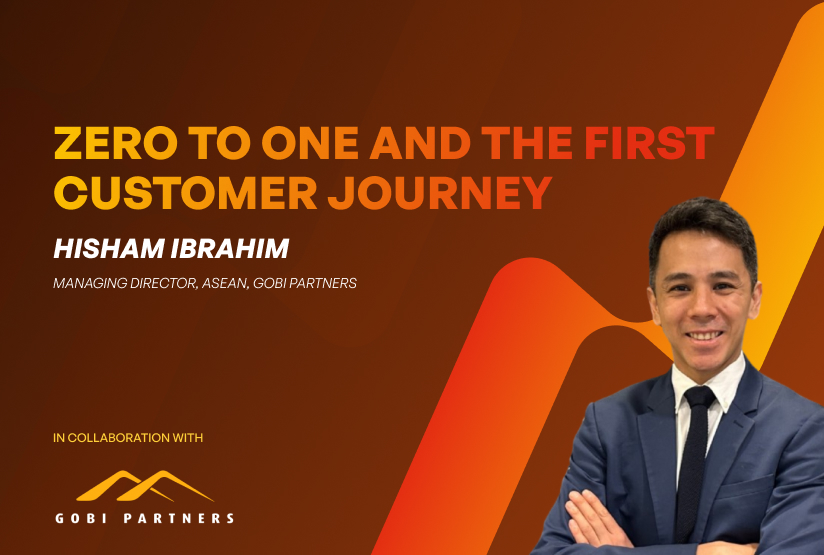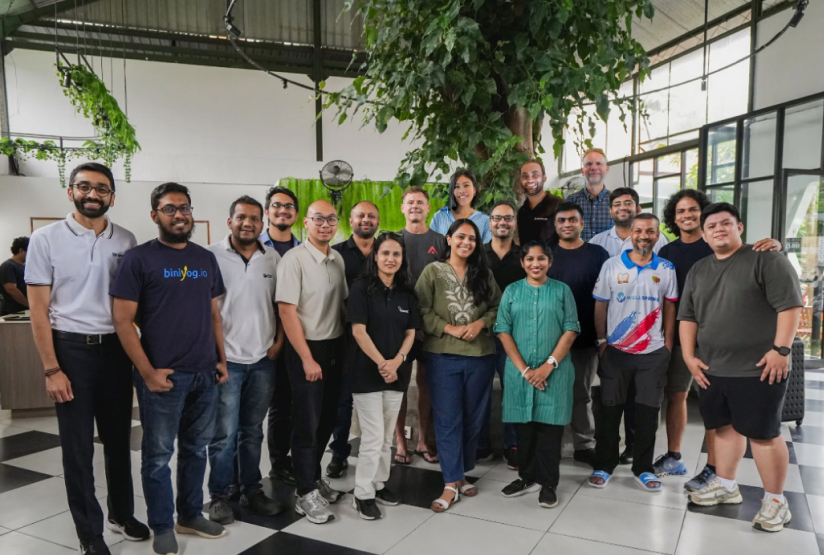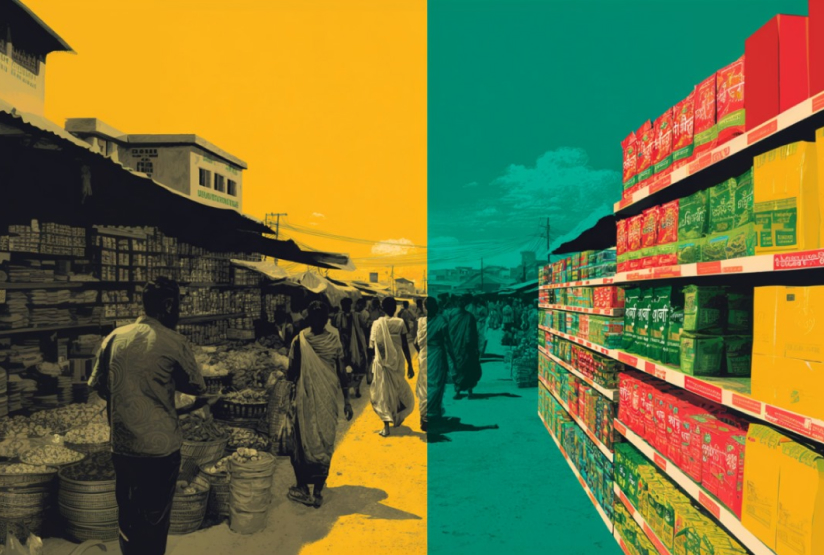

Inside Anchorless Bangladesh's Investment in Agroshift

Newsletter
At Anchorless Bangladesh, we have continued to streamline the process via which we make investment decisions on behalf of our investors. A key component is the internal investment memo, shared with partners and potential co-investors, providing transparency, insights, and a foundation for finalizing our decisions. For Bangladesh, a nascent market that most international VCs are unfamiliar with, we've found these memos to be especially invaluable.
Qazi Bouland, PhD , Diptha Saha and Rameez Hoque , the founders at Agroshift , have given us permission to share our investment memo on their company for their $1.8m Pre-Seed round that we co-led with Shorooq Partners .
Infinite thanks to Mohi Zaman and Ishti Alam for their incredible work on this.
Originally published for internal use in May 2022. For confidentiality reasons, certain sections have been omitted, and specific figures have been replaced with "X."
I: Introduction

1.1 Company Overview
Agroshift is an agritech startup that is working to connect consumers directly to farmers. Currently, the business is focusing on the 4 million (some estimates put it at 5.1mn which includes both direct and indirect suppliers; another study by BRAC on export-oriented factories only put the number at 2.8mn) RMG workers (56-80% of whom are estimated to be females), setting up shops in partner factories and selling high-quality fresh produce at affordable prices. For greater market access, the startup is also working with micro-retailers (Mudir Dokans) adjacent to the factories - selling excess produce to match supply with demand.
The startup won the STITCH for RMG: Global Innovation Challenge, organized by BRAC, H&M Foundation, and The Asia Foundation, the goal of which was to create an environment that advances the welfare and livelihood of women in the RMG sector of Bangladesh as well as boost the country’s performance in the space. By winning the competition, Agroshift was awarded with a $Xk grant as well as access to some of H&M’s sourcing factories—with the company piloting with Echotex. Currently, the startup has signed up with X factories having an employee pool of Xk workers [link to KPI spreadsheet]. Services have already been rolled out in X factories with Xk employees and X+ workers already using the service.
By using its digital grocery ordering platform, RMG factory workers and employees can order basic grocery items like rice, pulse, milk, meat, vegetables, and fruits, along with other daily needs. Going forward, customers will have the flexibility to order either through the mobile app or physically through the kiosks (containing fixed-mobile tablets) set up at designated places within the factories.
Once placed, orders are fulfilled by procuring the goods directly from Agroshift’s farmer networks located across X districts of Bangladesh (mainly in the northern regions of X, X & X), with sorting, grading, and packaging done by the startup at its central distribution center. Currently, the business has X collection centers, X distribution hub and X farmer leads.
1.2 Core Problem
The core problem is the broken agri supply chain that introduces inefficiencies into the system, depriving farmers of fair prices and consumers of affordable quality goods.
Farmer's End:
- Lack of Fair Prices: Due to a segregated value chain and low market access, Farmers’ share in consumer prices is very low, averaging less than 40% in 2018. Several layers of middlemen known as local traders (foria), commission agents (aratdar), wholesalers, and retailers take 43% while the remaining 17% constitutes different expenses.
- Lack of Proper Infrastructure: Due to a lack of an integrated cold chain system including packing and cooling of fresh food products, storage, and distribution by refrigerated transport, farmers are usually price-takers with low bargaining power. Cold storage is hardly used in the wholesale markets of Bangladesh and in most cases, are owned by the aratdars and used for potatoes, spices, and imported fruits only. According to Bangladesh Cold Storage Association, in 2019, the country had 428 cold storages with an estimated capacity of 5.5 million metric tons only.
Customer's End:
- Higher Prices: Involvement of middlemen at different stages push up prices with surveys estimating as much as 43% of consumer prices in Dhaka wholesale markets attributable to commissions by Forias and Arotdars.
Prices also increase due to high postharvest losses (PHL), especially in fruits and vegetables, due to the mishandling of perishables, poor transportation, inadequate storage facilities, lack of cold storage both at production areas and wholesale markets, and poor market infrastructure. A dated study financed by FAO (2010) puts PHL of fruits and vegetables at 23.6 to 43.5% with the highest loss in jackfruit followed by pineapple (43.0%), papaya (39.9%) and cauliflower (27.1%). As per another estimate by Md. Atiqur Rahman, post-harvest management expert of Hortex Foundation and currently working at the National Agricultural Technology Programme-phase II, the rate is around 30%.
A Winrock survey found the cumulative postharvest losses to range from 5% to 39% (pdf page 20) along the winter vegetables market chain with maximum losses incurred at the harvesting stage, reaching up to 15%.
- Lack of Freshness and Poor Quality Grocery Products: There is hardly any vehicle customized to transport fruits and vegetables; sometimes they are transported with many other things including poultry and dairy in the same vehicle. The most common vehicle to transport fresh produce is open trucks, which most of the time is overloaded with different types of products, resulting in spoilage and deterioration of quality. They are packaged before shipment using local materials and in most cases such packaging fails to preserve the freshness and quality of the produce.
1.3 Core Value Propositions
The core value propositions are as follows:
Farmer’s End:
- Fairer Prices: By disintermediating and reducing wastages, the Company can pass off some of the savings to the farmers. Through the platform, farmers effectively get direct access to the end consumer allowing them to schedule harvest as per available demand and at favorable prices;
- Better Market Access and Price Visibility: By delivering the harvest to the local collection hubs, farmers get an assured off-taker for their produce. With price visibility and fewer fluctuations, farmers might be encouraged to pursue good agricultural practices and not cut corners to increase profits/break-even.
Customer’s End:
- More Affordable Prices: By disintermediating the supply chain, Agroshift expects to pass on the savings to the customers, lowering their grocery cost by 15%; for the month of April, their net-take was ~X% which shows strong disintermediation and ample room for savings pass-through, both to customers and farmers;
- High Quality and Safe Produce: By procuring directly from the farm level and by maintaining proper storage and transportation protocols, quality of the produce can be better maintained. Wastage rate, product returns, and returning customer data are good metrics to understand if the Company is delivering on this prop or not - data that are not yet collected atm;
- Convenience: Customers can place orders digitally or from in-factory kiosks and pick up the goods directly from the factory itself. Sorting at Agroshift’s end means that the customers do not need to worry about the quality or freshness of the product - saving them not only the commute time and cost but also the hassle of sorting, choosing, and haggling.
Returning customer data can be a good proxy for validating Agroshift’s value proposition — the company is working on integrating its software with the factory’s HR database, which is expected to come live by June 2022.
With respect to convenience, it will be interesting to see if workers are okay with the lag time between placing an order and receiving it. At the moment, all orders are secured before 6.00 pm with items like fruits & vegetables delivered to the factory within a 12-24 hour period. Orders like beef and oil require more than 24 hours to fulfill, which means workers ideally need to plan their grocery purchases. If and at what level of price savings they are willing to give up this convenience is yet to be seen.
The obvious solution to this is for Agroshift to set up shops inside the factories and hold inventory to enable instant purchases. But this is not only more working capital heavy - having to constantly source and maintain fresh produce inventory but may also require idle factory space and the permission from the regulatory authorities to change the factory layout - limiting the whole setup to only large and agreeable factories.
Additionally, another convenience factor to note is workers’ purchasing behavior of bulky items like rice, pulse, oil, etc (items over >1kg). After work, many may walk back home (refer to section 2.2) or use congested public transport, making it difficult for them to carry heavy grocery items , especially if they are accompanied by a child. Sans substantial value props, workers may just opt for purchasing those items from nearby shops to their homes.
II: Industry Analysis
2.1 Global Scenario
There are several regional/global comparables that are managing B2B agri marketplace and are working directly with the farmers:

For most of these regional/global comparables, the demand side is slightly different although the supply-side strategy is quite similar. Pinduoduo, China’s agritech giant has introduced Duo Duo grocery that offers group buying for the end consumers. The company has introduced this as their complimentary service shortening fulfillment time for fresh groceries from 3-4 days to 24 hours. Not only does this play the role of another vertical but also helps Pinduoduo with demand prediction for their core agriculture business and optimizing supply accordingly. Another interesting fact for Pinduoduo is that, as of the end of October 2021, the company onboarded 126,000 farming professionals who were born after 1995 onto its platform. This is a 47% increase from 2020 and a 324% increase from 2019. This indicates the platform's ability in attracting the new generation of farmers onto the platform.
DeHaat of India provides agri inputs for farmers with their 200+ input suppliers. The company averaged 2,000+ input orders per day for the year 2021. This is one of the core angles of the business as inputs heavily impact the quality of products and help to keep consistent pricing. DeHaat also introduced Farmer Group Financing and Digital Lending for farmers with good credit history. As the company has been working with farmers in several steps of the production and supply chain process, venturing into a fintech product made sense for them.
Indonesian startup Sayurbox also provides loans to farmers. The company has partnered with AwanTunai (a digital financing startup) to provide loans to farmers who have been on their platform for over 6 months. Farmers can get $704 - $3,500 worth of loans dispensed by AwanTunai. Sayurbox has facilitated loans for more than 5,000 farmer groups. The company also focuses on reducing waste. They claim that their partner farmers can reduce waste from 30% to 5% in every step of production through the Sayurbox platform. Another interesting fact is that the company sources all grades of fruits and vegetables as long as they are adequate enough to mitigate the losses of the harvested crops. They incentivize customers to buy imperfect goods by selling them at lower prices. By doing so, Sayurbox absorbs 100% of farmers’ yields so that they do not lose out, resulting in reduced wastages as well . A case study from Google shows that the platform leveraged Google Maps Platform to optimize routes for delivery. As a result, they could do a 25% cost reduction for each food delivery order.
Like DeHaat and Sayurbox, Tazah also aims to include financial aid for farmers. In order to do that, they are waiting to observe several more procurement cycles to understand the underlying capital investment needs of the farmers. It also aims to build a data analytics platform for the farmers so that they do not over-harvest and suffer from wastages.
Considering the focus of some of these global/regional startups that have raised venture funding, it is clear that reducing wastage and working directly with farmers have been the core highlights. For most of these companies, the focus is heavily on the supply side and how to streamline it by leveraging data. For Agroshift, the scenario might be slightly different considering the demand side of the company where there is a large and captive user base representing a prime segment of the working population.
2.2 Bangladesh
Food Consumption (Grocery):
Household expenditure of the urban people of Bangladesh is dominated by food consumption. Food and Beverages account for 42.59% of the total household expenditure followed by housing expenses which is 17.25% (pdf page 25). In 2016, the average per capita food expenditure of urban people used to be $340.4. In 2021, adjusted for food inflation, this number is somewhere around $461.7.
RMG Workers:
The ready-made garments (RMG) workers of Bangladesh are the primary target customers of Agroshift. According to The Bangladesh Garment Manufacturers and Exporters Association (BGMEA), there are around 4,500 RMG factories in Bangladesh. In those factories, approximately 4 million garment workers are employed.
A survey report published by Asian Center for Development in 2021 shows that the average family size of a garment worker consists of 4 members among which, at least 2 of them are earning members. The average monthly income for each family is 273 USD where 69 USD (25% of total income) is allocated for food consumption.
The average per capita food consumption pattern of garment workers is highest for cereals and cereal products followed by vegetables. Rice essentially dominates daily food intake at 443 grams making up 52.37% of total food intake (847 grams). On average a person consumes 162 grams of vegetables which is 19.14% of total daily food intake. Milk and milk products, eggs, and meat are consumed only occasionally in small amounts. Fruit intake is mainly seasonal and includes banana, mango, jackfruit, guava, blackberry, and other locally produced less expensive ones.
Nearly 80% of the workers walk to their workplace and it takes about 19 minutes to reach their factories from home. Therefore, it is assumed that they live within 1 to 2 kilometers from their workplace, possibly making it difficult for a worker to carry bulk amounts of groceries from the factories to their home, especially if they are also carrying a child.
Suppliers’ (farmers) End:
Bangladesh is a $409 billion economy that is expected to grow at 7.1% in 2023. Around 12% of the total GDP is contributed by agriculture. In 2020, agriculture was a $44.7 billion market among which $40.8 billion worth of products were produced locally.
Farmers:
Approximately 40% of the total population of Bangladesh is employed in the agricultural sector. According to the National Agricultural Census report (2019), Bangladesh is currently home to 16.5 million farmer families.
While farmers are considered to be the backbone of the economy, they receive less than 40% of the consumer retail price of agro products. Several layers of middlemen known as local traders (foria), commission agents (aratdar), wholesalers, and retailers take 43% and the remaining 17% constitutes different expenses.
While this excessive commission (43%) by middlemen is pushing the retail price of agro products beyond the affordability of lower-income class people, it is creating opportunities for different market players. Any market player who can create an effective supply chain bypassing the middlemen will have the ability to offer the products at a reduced price to the end customer. At the same time, they will have the opportunity to offer better prices to the farmers to procure quality products.
2.3 Competitive Landscape
Apon Wellbeing
An omnichannel marketplace of affordable products for industrial workers in Bangladesh. Apon Wellbeing sets up retail shops at RMG factories from where workers can purchase everyday products with an average discount of 9% on the market retail price. The workers receive access to free health insurance and credit facility when they purchase groceries from Apon Wellbeing’s factory-based retail shops.
After starting the journey in 2016, Apon Wellbeing set up its first shop in April 2018. Currently, they have 20 shops operating across various RMG factories and are catering to around 51,000 workers of whom 4,500 purchase products worth more than $23 each month. In addition to the existing shops, they have 25 factories in their pipeline where retail shops will be set up soon.
They have won several awards from the World Economic Forum, MetLife Foundation, YGAP, and Tommy Hilfiger. So far, Apon Wellbeing has raised around $600,000, most of which is in the form of grants. Currently, they are planning to raise $1.2 million and want to set up at least 150 retail shops in the next three years.
[For confidentiality purposes, a section of the analysis has been omitted]
Fashol
A wholesale agriculture products marketplace for retailers. It has its own website and mobile app through which retailers, super shops, or online e-commerce companies can place orders. The company collects agricultural products such as fruits and vegetables from different parts of the country, brings them to its distribution center, sorts them using an in-house sorting method, and then delivers them to partner retailers. It provides free delivery and its prices are 5%-10% lower than the market rate.
They have operations in various residential and non-residential areas of Dhaka city and are currently working to expand into two more divisional cities. Their core target customers are the vegetable and fruit retailers, and they are currently serving around 500 such retailers. In addition to the lesser price, the retailers save $9 - $17 on transport costs each day by availing Fashol’s free delivery service.
[For confidentiality purposes, a section of the analysis has been omitted]
III: Company Analysis
3.1 Team and Execution Ability
- Qazi Musabbir (CEO): Qazi is the co-founder and CEO of Agroshift. He comes with 13 years of experience mainly in digital products and DevOps along with software development. He has a background in Computer Systems Engineering completing his Ph.D. in Electronic and Computer Engineering from Brunel University London. While having an academic background in computer engineering, Qazi’s work experience mostly involves DevOps, Data Science, and Software Architecture.
- Diptha Saha (COO): Diptha is the co-founder and COO of Agroshift. He is looking after operations and the supply chain. Diptha is a serial entrepreneur. He co-founded Khamar-e back in 2019 and continued it for more than 2 years. Khamar-e mainly focused on agri supply chain traceability for dairy and livestock products. He also co-founded a PR service company called PReach. Diptha did his B.Eng. in Industrial and Production Engineering from the Bangladesh University of Engineering and Technology (BUET).
- Rameez Hoque (CPSO): Rameez is one of the co-founders and plays the role of Chief Product and Strategy Officer. Rameez is an entrepreneur and investor. He co-founded Kinship AI, a factory workforce management software company. He also invested in a digital agency and content platform called HiFi Public. Rameez did his BA in Political Science from the University of Toronto.
[For confidentiality purposes, a section of the analysis has been omitted]
3.2 Product
Agroshift is currently working on building the MVP and connecting it with the kiosks to be delivered to the onboarded factories. At present, they have implemented one table-stand tablet kiosk in one of their onboarded factories. They have ordered two more floor-stand kiosks which they will set up this month. According to the founders, the cost of each kiosk ranges from $X -$X.
Besides kiosks, the team is building the software where they can integrate the HR and payroll data of the onboarded garment workers and verify their customers. In this way, the product can capture more purchasing data against the customers’ profiles. This will enable them to track footfall, churn, retention, buying behavior, etc. The team plans to deploy this by the end of June. Currently, they are only maintaining a simple order tracking system through third-party kiosks.
3.3 Business Model
The current business model is pretty straightforward: a commission charged on GMV:
- For Factory Workers: X-X% charged on average;
- For Micro-Retailers: X-X% charged on average.
With an average sales split of around X-X, the average take-rate comes to ~X%. Historically, in the 2 months just ended (March and April 2022), the take-rate was X% and X%, respectively.
With regards to operation, the flow chart looks like the following:

1. Demand Aggregation:
The Company basically works on a pre-ordering system, aggregating demand and matching it with supply from its farmer networks, millers, and traders. Although the process is manual atm, going forward, orders can be placed via the app and/or through designated kiosks.
Operational Bottlenecks/Challenges:
With a pre-ordering system, there likely needs to be a shift in the purchasing behavior of the RMG workers for this model to really scale. The table below summarizes the changes likely required:

An obvious workaround to pre-ordering is setting up shops inside the factories and maintaining inventory of high-velocity/high wallet share goods. But this is subject to available factory space, and management and regulatory approval (in changing factory layout). This might also limit the Company’s customer base to mostly large factories where approval for such change is likely to be more forthcoming, at least initially.
2. Procurement:
Currently, the startup collects from a combination of farmers, millers, and traders. Fruits & vegetables are collected from farmers; grains (rice, lentils/pulses) from millers; and some other SKUs like potatoes & onions from traders.
In terms of farmers, procurement occurs at the Company’s collection hubs located in the Greater Mymensingh region, where farmers near the hubs either come to them or Agroshift collects it from them. The hubs are located near the factory belts in Gazipur/Savar, no more than X kms away, enabling the micro logistics network to function smoothly. Currently, farmer leads have been deployed in village markets from where they facilitate the procurement from farmers. In a few months, this will soon be converted into a system database with location, product info and communication built on top of it.
Operational Bottlenecks/Challenges:
In terms of procurement, the key operational challenge is the aggregation of demand and matching it with supply, especially for seasonal products. Individual farmers usually harvest in one-go and are usually looking to sell off the entire harvest due to a lack of proper storage facilities. To be an off-taker to that farmer, the Company needs to aggregate enough demand in a single area to rationalize the distribution (transportation) and other overhead costs.
In terms of demand fulfillment, the Company needs to have a large enough pool of farmers so as to continuously provide it with supply. Quality control then becomes a challenge due to the scale of the operations. This can somewhat be mitigated by working with other startups/NGOs in the space - where technology is used at the farmer level to monitor the whole farming process.
Another alternative, at least initially, is to work a level above the farmers where goods are aggregated and sold off to participants higher up the value chain. The business is already doing this by engaging with millers and traders alongside farmers.
3. Sorting, Grading, and Distribution:
Currently, farmer-leads sort and grade during procurement at the collection hubs. Only accepted quality is bought and paid for leading to no real wastage at this stage.
At the distribution hub, the Company has a very basic setup like a stopover where goods are aggregated and packaged for distribution to the factories.
In terms of wastage, it mainly occurs when orders are not collected, which currently is not significant enough to be tracked. In the factory drop-off points, no inventory is held beyond the same day since the Company operates on a near-zero wastage model achieved through pre-ordering. Anything leftover at the end of the day is sold to nearby retailers/wholesalers at low prices instead of being thrown away. As an exception, rice/cooking oil (non-perishable items) are sometimes held as inventory at the time of peak demand.
Operational Bottlenecks/Challenges:
In terms of sorting and grading, it is likely that the company needs to be involved at the farmer level to ensure the quality and safety of the produce. If proper standards and protocols are not maintained during planting and growing, the quality will be affected regardless of the steps taken post-harvest.
How the Company deals with rejected/low-quality products is also something worth observing. The wastage rate/non-acceptance rate at the collection hubs will be an important metric to follow as well as farmer retention numbers - too strict quality measures may leave farmers unsatisfied.
Interesting insights can be drawn when this metric will be compared to the wastage rate/non-acceptance rate at the distribution center and/or the customer level - with high rates potentially indicating low-quality control measures at the collection hubs.
3.4 Traction
Agroshift actively started its operations in March 2022. Till now, the company has signed X factories in total with an employee pool of X. Out of these X factories, X are successfully onboarded along with X no. of employees. Their total active customers for April 2022 was X which decreased by X% from the previous month’s value of X.

If we look at the average basket size for April 2022, it comes to $X. As stated in the Research section, the monthly spend of each RMG household on food consumption is $69. That brings Agroshift’s current basket share to ~X%.
If we see the breakdown of GMV from the factory (April 2022), X top the chart with almost X% GMV-share. About X% of the GMV encompasses perishable items (X and X). It is followed by X (X%) and X & X (X%).


GMV for last month (April 2022) was $X from the X onboarded factories. As mentioned before, the average basket size for April was $X. Net revenue stood at $X at a take-rate of X%. The company served X SKUs for the month.

At present X% of Agroshift’s GMV comes from factories and the rest X% from micro-retail.

Alongside that, Agroshift now has X collection centers and 1 distribution center as of April 2022.
3.5 Investment Plan
[For confidentiality purposes, this section has been omitted]
IV: Investment Thesis
4.1 Investment Highlights
- At the crossroads of two large industries: In terms of core customer segment, the Company has the unique opportunity to diversify and expand its services to either the RMG workers (demand-side) or the farmers (supply-side), or potentially both after a point in time. With regards to the RMG workers, as a captive market, upselling and cross-selling consumer products like healthcare, insurance, recruitment, EWA, BNPL, etc can be explored down the line. On the other hand, like most global comparables, farmers can be better served with inputs, advisory, insurance, greater market access, etc.
- The financial model indicates that the Company is leaning more towards serving farmers with future funding rounds, which is reasonable given Diptha’s strong background in agriculture. But given the operational challenges in working with individual farmers (low tech adoption, low literacy, low reliability, more active involvement, etc.), the Company will always have the option to focus on the RMG workers instead where tech adoption is arguably higher with more visibility into their income and expenditure patterns. Qazi’s data science background can be used to leverage all the data captured. Sales cycle for onboarding factories might be long but once completed, it will provide instant access to 1000’s of employees/data points.
- Captive and untapped market: Despite being one of the largest industries in Bangladesh, there is very little startup activity in the RMG space - leaving room to serve very fundamental needs. By starting off with grocery items, the company is effectively trying to capture a core share of their wallet (groceries also being a high-engagement item) with its strong value propositions (affordability + high quality). If properly served, enough trust can be garnered to easily move into more value-added services - massively reducing customer acquisition costs due to the captive nature of the market.
- On the supply side, market access is one of the key issues in the agricultural space, and a direct connection to a large captive consumer market can be a strong stepping stone for more value-added services. The value propositions are strong here as well and a pre-ordering demand aggregation system can potentially be used for harvest planning, crop selection, quality control, PHL (wastage) management, etc to change the landscape of the agricultural sector as a whole.
- Pre-Ordering System: The system which is effectively a group-buying one, allows the company to run an inventory-lite model with low working capital needs (financing of which has been quite challenging till now in Bangladesh). Currently, the working capital cycle is only 3 days with cash payments on both sides of the transaction. With a pre-ordering system, the company can disintermediate and operate on a near-zero wastage model, channeling the price savings to both farmers and customers - creating a loyal user base to whom other value-added services can be provided at low acquisition and adoption costs.
4.2 Concerns and Headwinds
- Purchase pattern behavioral adjustments: It is still early days but it will be interesting to see how the pre-ordering system (essentially group-buying system) pans out. As more data flows in, conclusions can be drawn as to what level of price savings will be required to catalyze the behavioral changes required to make this model a success. Historical traction data shows that the Company has enough margins to adjust the price savings level, and it will be in its best interest to make this work. The initial tech adoption might be a bit challenging but the value propositions seem strong enough to weather the turbulence.
- Close attention may also be warranted to the basket composition and how it develops over time. Perishables (X and X) constitute a small proportion of grocery spending with high operational challenges and a lot of inefficiencies ( which also means more opportunity for price savings). But for the Company to actually have a lasting impact, it will likely need to gain a large share of non-perishables (X, X, X, etc.), where (price) maneuverability might be relatively limited. Although, operationally, these are easier to deal with due to low seasonality, long shelf life, wider farmer base, etc.
- Supply chain bottlenecks: Working directly with farmers is quite operationally challenging in BD due to the reasons discussed above (low tech adoption, low literacy, low reliability, more active involvement, etc.) - and till date no startup seems to have solved the issue (X is the one that is most active in the space but our DD revealed that they are yet to disintermediate to that level). But without direct intervention, it is difficult to maintain the quality of the products. It will be interesting to see how Agroshift tackles the issue.
- One work-around for the company, at least initially, might be to collaborate with others in the space who are already working directly with farmers (X with advisory and yield management, X with Inputs) while they focus more on the market access part of the industry.
- Tech deployment and adoption: [For confidentiality purposes, a section of the analysis has been omitted]
V: Sustainability/ESG
[Internal ESG assessment spreadsheet link]
Please note that the investment memo included a supplementary financial projections sheet, which we are withholding for confidentiality reasons.
The memo was originally published by Rahat Ahamed on his LinkedIn.





















.jpg)
.jpg)





.jpeg)



.jpg)

















.jpg)


.jpg)
.jpg)

.jpg)
.jpg)


















.jpeg)












..jpg)
..jpg)



.jpg)






